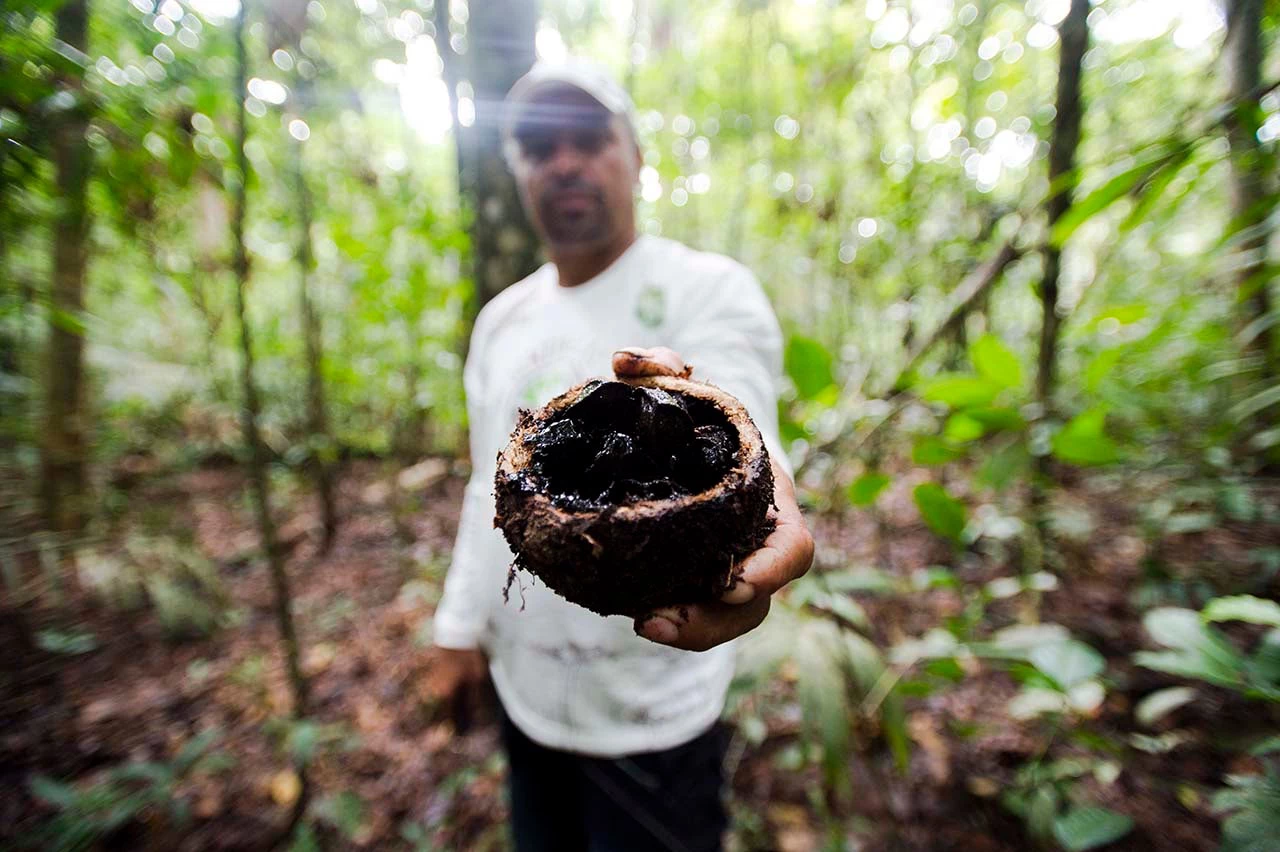 Man showing a fruit from the Brazilian Amazon.
Man showing a fruit from the Brazilian Amazon.
Originally published in Valor Econômico
With the world switching rapidly away from fossil fuels to clean energy, Brazil is well ahead in the race. More than eighty percent of its electricity already comes from renewable sources such as hydropower. In contrast, the opposite is true in China: more than 80 percent of electricity comes from coal, gas and oil. The story is similar in other countries.
In a world of accelerating climate change, Brazil is in a strong position to control its future. This is the central message of the World Bank’s new Country Climate and Development Report (CCDR) for Brazil. CCDRs examine how countries can continue to develop as they combat climate change. They aim to help countries decide what actions to take to improve the lives of their citizens while also reducing greenhouse gas emissions and adapting to the impacts of climate change, such as droughts, floods, or storms.
The Brazil CCDR proposes two key actions: Brazil should build on its advantage in renewable energy to turn itself into a clean energy powerhouse , and it should implement a plan to protect the Amazon for the people living there, and for Brazil as a whole.
Brazil’s path to becoming a clean energy powerhouse is clear. Meeting future energy needs with clean energy would not cost Brazil more than current plans to expand the use of fossil fuels . Although it would bring higher upfront costs for power generation, transmission, and storage, these costs would be fully compensated by downstream savings in fuel and operations. Electrifying transport and industry using renewables, including green hydrogen, would also not increase costs to the economy.
With greater use of renewables, Brazil would also be more resilient to climate change. The CCDR shows that, even if erratic rainfall makes true the most pessimistic outlook for hydroelectric power, a power system based on renewable energy and storage remains the cheapest option for Brazil.
Moreover, with an economy based on renewable energy, Brazil is well-positioned to compete in the growing global market for green goods and services. It is already competitive in several products required for moving away from fossil fuels, such as parts for wind turbines, electric motors and generators. Brazil could also succeed in producing equipment for solar power, generating and exporting green hydrogen, and exploiting major deposits of climate-relevant minerals.
In short, Brazil can and should develop its enormous green energy potential. But for the country to be green, it also needs to reduce its greenhouse gas emissions sharply. Despite its green energy mix, Brazil today is still among the top 10 emitting countries. How can this be?
Here too, Brazil has an exceptional story. Brazil is a large greenhouse gas emitter, not because it uses dirty fuels, but because it continues to cut down forests to cull timber and to expand agriculture. From 2000 to 2020, 76 percent of Brazil’s emissions came from land use change of this kind. A standing forest absorbs carbon; cutting it down releases it.
With 21 percent of the Amazon forest already cut down, the remainder is rapidly approaching a tipping point, beyond which its life-giving cycle of transpiration, evaporation and rainfall will be irreparably broken. This will have devastating impacts across Latin America—and particularly in Brazil. As forest gives way to tropical savannah, there will no longer be enough moisture to sustain the hydrological cycle on which Brazil’s agriculture, hydroelectric power, and urban water supply all depend.
Much has been said about protecting the remaining forest by enforcing environmental laws, and this remains an urgent priority. Less has been said about removing the incentives for its destruction while still protecting jobs and ensuring food security. The Amazon can also be protected if more food is produced on the land that is already used for agriculture —and this is possible in Brazil.
An appropriate development plan for the Amazon region would include investments to continue to boost agricultural productivity and make it more resilient and sustainable. Combined with strict enforcement of land use regulations, it would help farmers to make better use of existing agricultural land, instead of exhausting it through unproductive practices and then replacing it with new land by slashing and burning down more of the forest. Technical assistance, extension services, reforms to the rural credit program, and improvements in irrigation would all help.
Investments are also needed to improve basic services, provide sustainable infrastructure and support the livelihoods of people living within the Amazon. For example, more could be done to realize the potential of the Amazon’s bioeconomy to provide a living, including for many indigenous peoples. Expanding protected areas could open opportunities for ecotourism, sustainable forest management, and sustainable harvesting of non-timber products.
Climate change is profoundly changing the way that people will live all over the world. Brazil is in the fortunate position that it can both help to contain climate change and to provide its people with better lives. Turning itself into a green energy powerhouse while protecting the Amazon are two important ways it can achieve these goals.
Stay updated with our weekly article
Related articles:



Join the Conversation